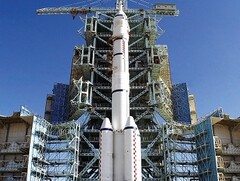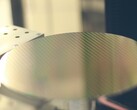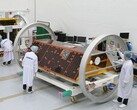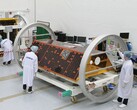The Long March 2D lifted off from the Jiuquan Satellite Launch Center at 12:12 (Beijing time) on 14 May 2025. It delivered a dozen “space computing” satellites to a sun-synchronous orbit, closing the flight as the 576th success for the Long March family.
Mission planners adopted a two-tier arrangement for the satellite: two primary satellites were stacked vertically on top, while ten secondary craft were mounted in twin rings along the barrel. Four precisely timed separation events released the payloads, with flight-profile optimization minimizing attitude disturbance on the rocket’s upper stage.
The launch moved from contract signature to lift-off in just five months. Engineers from China Aerospace Science and Technology Corporation’s Eighth Academy coordinated early with satellite teams to pin down electromechanical interfaces and orbital parameters, accelerating integration and demonstrating the liquid-propellant vehicle’s ability to handle mixed payloads of up to 1.3 tons to a 700km SSO.
These twelve spacecraft form the opening tranche of the “Star Computing” (also called “Satellite Computing”) program. Guoxing (ADA) Space built the buses, while Zhijiang Laboratory supplied the core payload to the “Three-Body Computing Constellation” specification. Each satellite can execute five peta-operations per second, and program managers ultimately envision a 2,800-satellite network able to scale to roughly 1,000 POPS overall.
Beyond sheer processing power, the platforms carry 100 Gbps inter-satellite laser links and an X-ray detector from Guangxi University, enabling both real-time onboard inference and astrophysical monitoring of phenomena such as gamma-ray bursts. Ground partners—SoftStone, Kepu Cloud, and others—are building data centers to mesh with the orbital layer, aiming to shift energy-intensive workloads off-planet and cut terrestrial datacenter emissions.
Source(s)
CASC (in Chinese)















